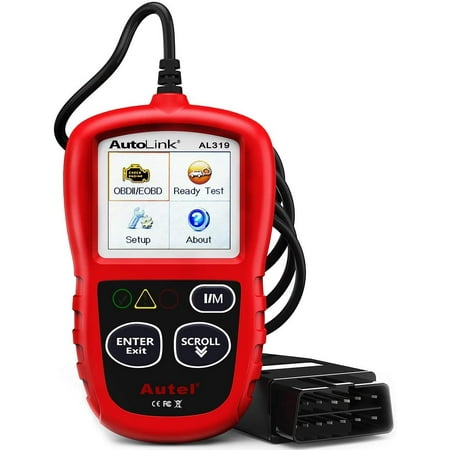LAUNCH CRP123X OBD2 Scanner Professional Car Diagnostic Code Reader for Engine Transmission ABS SRS Diagnostics, with AutoVIN Service Wi-Fi Updates
Professional System Diagnostic Scan ToolLAUNCH CRP123X is a professional OBD2 scanner designed to make work easier for mechanics performing engine, AT, ABS and airbag diagnostics.Support for all 10 modes of OBD2.Fast Android 7.0 Operating SystemCrisp 5.0-inch Touch Screen Display (720P)Large 4GB Internal Storage4000mAh built-in Rechargeable BatteryOne-touch Wi-Fi Update Service that is Free to access for a Lifetime.Automatic Vehicle Health Diagnostic ReportData Stream Record and PlaybackDiagnostic FeedbackReal-time Vehicle Battery Monitoring and Graphing.Comfortable Rubber Over-molded OuterSupport for 9 Languages: English, Spanish, French, German, Italian, Russian, Polish, Japanese and Korean.4 System Diagnostic – Check ENGINE /ABS /SRS /TRANSMISSIONCheck ABS CodesSRS MIL Turn-offEngine DiagnosticsCheck TransmissionLAUNCH CRP123X – An Advanced Diagnostic ScannerHelpful Diagnostic ReportThe obd2 scanner will automatically generate and store a basic diagnosis report on the vehicle as a reference for vehicle inspection and maintenance. The vehicle operating data provided in this report are the static data, you can share and print itby email for technical assistance.Real-time Voltage MonitoringTo faster solve your problems during vehicle diagnosing and bring you better services, the diagnostic scanner offers the add-on features of real-time vehicle battery voltage monitoring. With graphic displays, you can effortlessly figure out if yourbattery is within the normal range.Quick VIN IdentificationThe CRP123X is an easy-to-use scanner aiming at helping you solve automotive issues quickly and accurately. In addition to manually selecting the vehicle information like year, make, model and VIN, you can quickly access the system via AutoDetectfor VIN acquisition.Lifetime Free UpdatesThe LAUNCH CRP123X is an Android-based obd2 scanner and supports lifetime free updates through Wi-Fi for more vehicle coverage and bug fixes. You’ll get a notification if any diagnostic software update is available, and you can easily update it withclicks. Never go to search and check for updates anymore.Full OBD2 FunctionProviding full 10 test modes of OBD2 diagnostics with multilingual menu display and built-in DTC Lookup, the CRP123X is an inexpensive scan tool to diagnose and fix problems on OBD2-compliant vehicles.Wide Suitable VehiclesThe code reader has an expanded coverage for more than 57 suitable vehicle makes to access the engine, AT, ABS and airbag system troubleshooting the trouble codes and warning lights, including Toyota, Lexus, Ford, Honda, Chrysler, Jeep, Hyundai, Kia,Mazda, Nissan, Jaguar, Land Rover, Mercedes-Benz, Volkswagen, etc.
















Reviews
There are no reviews yet.